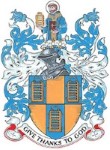Our History
Long before they received formal recognition, the Girdlers were a fraternity of craftsmen, associating for religious observance and mutual assistance as well as guarding the secrets, standards and conditions of their craft (or “mystery”).
The Letters Patent of Edward III (granted in 1327) – which were renewed several times between 1353 and 1462 – laid down standards for the manufacture of girdles, and gave search-and-destroy powers to the elected representatives of the craft so that the standards could be enforced.
The earliest recorded mention of a Master came in 1328, when Ralph de Braghynge and three Guardians were elected "for the government of the Mystery of Girdlers".
On the 6th August 1449, the Girdlers became an incorporated body by the grant of a Royal Charter to “The Master and Guardians of the Mystery of Girdlers in the City of London” in the reign of Henry VI. This gave them the advantage of continuity, so that they could own property free from the hazards and penalties which befall mortal men.
The Company received a grant of Arms in 1454, embodying three gridirons, or girdle-irons. The crest is a figure of St. Lawrence the Martyr, who was literally grilled by being burned to death on a girdle-iron. Because of this punning allusion, St. Lawrence is the patron saint of the Girdlers, and the Company has ancient connections with the church of St. Lawrence Jewry-next-Guildhall.

Over the centuries, various bequests of land were made by Girdlers to the Company, notably by Cuthbert Beeston in 1582, Henry Flycke in 1583 and George Palyn in 1610. Henry Flycke's bequest consisted of the George Inn, Hammersmith, as well as nearby land (including strawberry fields), which brought in £5 10s a year in rent at the time, but which now accounts for much of the Company's income.
The principal Ordinances now governing the Company are those of 1682, granted to “The Company of Girdlers London” by Charles II.
Members of the Company used to wear a distinguishing livery – a gown and coloured hood, believed to have been of blue and gold (hence the name “Livery Company”, and the term “the Livery” for the members of all such companies).



